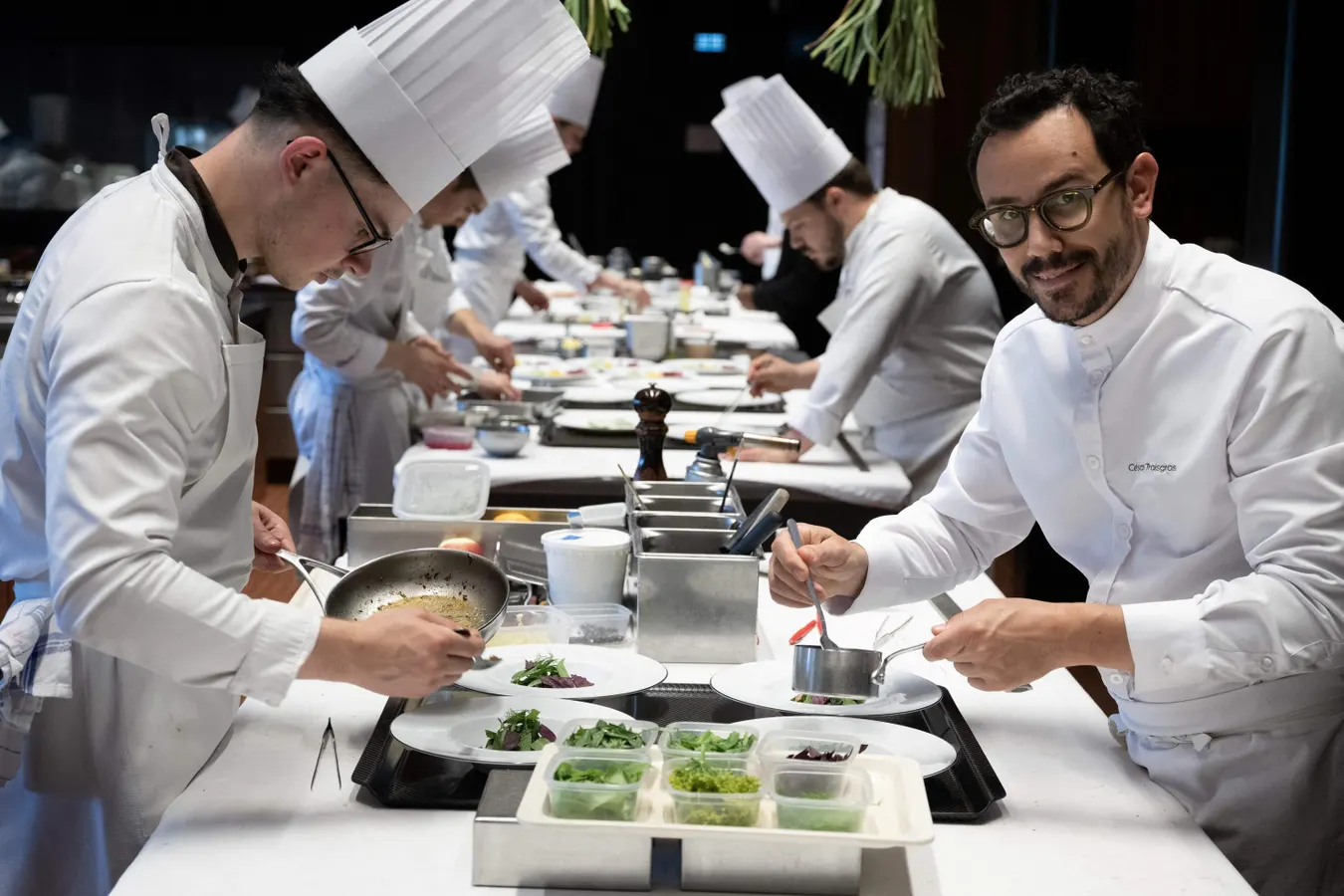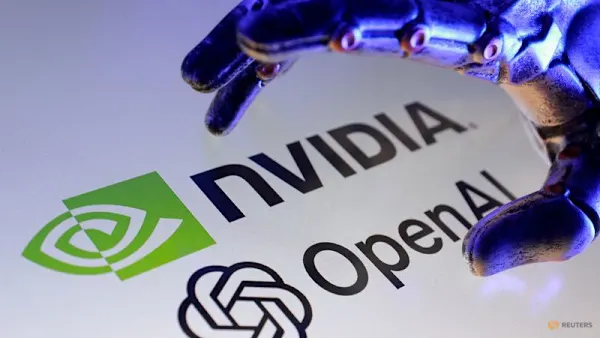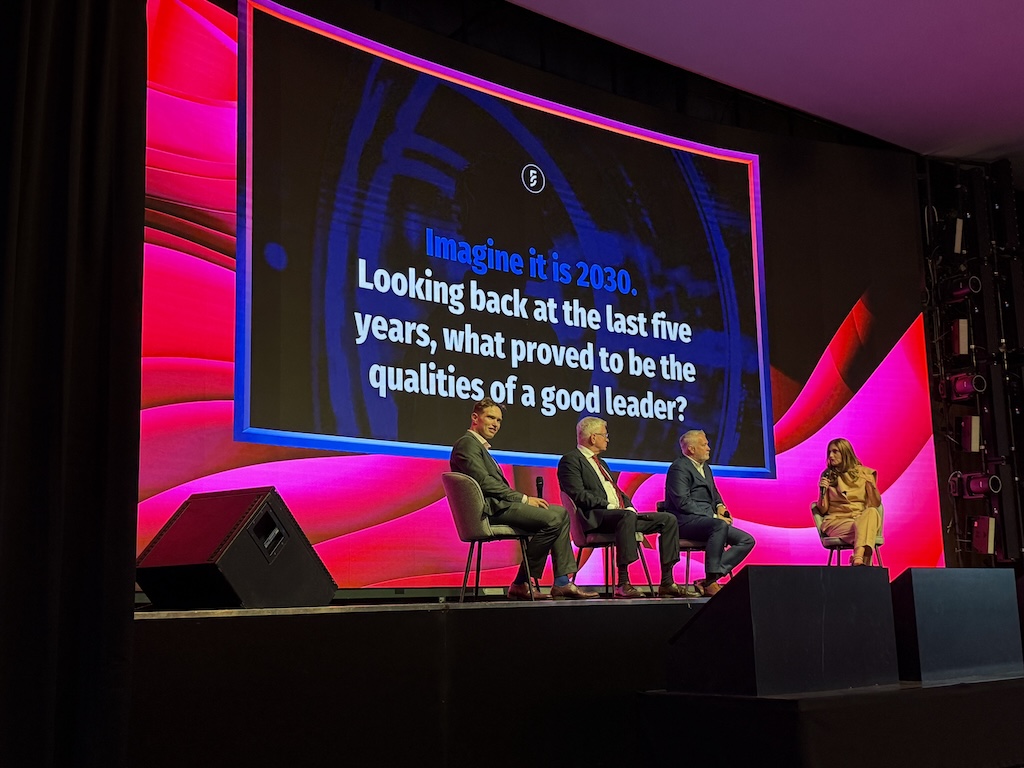By Contributor,Sahar Hashmi
Copyright forbes

True AI scalability isn’t about a single perfect recipe, but about building the world-class kitchen. It requires a trusted data pantry, an automated assembly line (MLOps), and a master chef’s governance. This transforms isolated experiments into a reliable, Michelin-starred enterprise.
AFP via Getty Images
Every executive has tasted the promise of Artificial Intelligence. A successful pilot project can feel like a master chef creating a single, perfect dish—a tantalizing glimpse of potential. Yet, the true challenge, and the real competitive advantage, lies not in crafting one meal, but in building a scalable, world-class culinary enterprise. Too many organizations remain stuck in “pilot purgatory,” unable to move from a promising proof-of-concept to enterprise-wide transformation. The reason is simple: they focus on the recipe, not the kitchen.
Scaling AI requires a fundamental shift in mindset—from pursuing isolated projects to building an integrated platform. It is the difference between a single food truck and a global, Michelin-starred restaurant chain. The former relies on a few individuals; the latter thrives on systems, standards, and seamless operations. For leaders, the journey to scalable AI is less about the algorithms themselves, and more about the disciplined engineering and governance that allows them to flourish.
The Five-Course Strategy for Scaling AI
To build this AI “kitchen,” executives must master five core disciplines.
1. The Foundation: A Single, Trusted Pantry
One cannot run a chain of restaurants with dozens of disorganized, unlabeled pantries. Similarly, scaling AI on broken data foundations is impossible. The first non-negotiable step is to create a unified data platform—a single, governed source of truth. This requires rigorous data governance: agreeing on what a “customer” or “sale” truly means, ensuring ingredient quality, and knowing the provenance of every data point. Master Data Management ensures that core entities are consistent, because an AI trained on conflicting definitions will inevitably fail.
2. The Universal Translator: Flawless Interoperability
A scalable kitchen must integrate seamlessly with its suppliers, regardless of their native language. In the digital enterprise, legacy systems speak different dialects. The strategic solution is to mandate interoperability by design. This means adopting industry-standard languages, like FHIR in healthcare, and embracing an API-first architecture. Instead of building custom connectors for every system, leverage integration platforms that act as universal translators, allowing new data sources to be “plugged in” without disrupting the entire operation.
3. The Automated Assembly Line: The Engine of MLOps
Hand-crafting a single dish is an art; mass-producing thousands with consistent quality requires an assembly line. For AI, this engine is MLOps (Machine Learning Operations). MLOps automates the entire AI lifecycle—testing, training, and deployment—through Continuous Integration and Continuous Delivery (CI/CD) pipelines. A critical component is the “feature store,” a central repository that ensures every AI model uses the same, correctly prepared ingredients. This automation is what transforms AI from a bespoke craft into a reliable, industrial capability.
4. The Michelin-Star Kitchen: Architectural Flexibility
A monolithic kitchen, where a failure in the oven shuts down all prep work, is a profound risk. The same is true for AI architecture. A microservices approach—building AI capabilities as independent, modular services—allows teams to develop, update, and scale components without bringing the entire system down. Coupled with a cloud-native foundation, this provides the elasticity and security to grow efficiently, without the burden of massive capital expenditure.
5. The AI Leadership Playbook: Governance and the Dream Team
Even the best-equipped kitchen will fail without a head chef, a manager, and a rule book. Technology is only half the battle. Success demands organizational discipline.
• Governance is the Rule book: It provides the guardrails for quality, ethics, and risk management. It ensures AI decisions are explainable, biases are detected and mitigated, and a human remains in the loop for high-stakes choices. This builds the trust required for scale.
• Cross-Functional Collaboration is the Dream Team: A centralized AI Center of Excellence sets the standards, but execution must be federated. The most effective AI solutions are built by embedded, cross-functional teams where data scientists, IT engineers, and business-line leaders work side-by-side. This ensures that technology solves real business problems, not just technical curiosities.
The Executive’s Taste Test
Before scaling any AI initiative, leaders should pressure-test their strategy with a simple checklist:
• Data: Do we have one organized pantry, or are we still hunting through messy cupboards?
• Interoperability: Do our systems communicate with a common language, or do we rely on custom translators for every conversation?
• Process: Do we have an automated AI factory, or are we still building models by hand?
• Architecture: Is our AI a monolithic block, or a set of flexible, building blocks?
• Organization: Do we have a clear rule book and the right team of chefs, managers, and suppliers in place?
The Executive Imperative
The ultimate differentiator in the AI race is no longer algorithmic brilliance, but operational excellence. The leading organizations have triumphed by mastering the foundational discipline of building a scalable enterprise platform, shifting their focus from crafting a single, exquisite dish to constructing a Michelin-starred culinary infrastructure. This transition, from a bespoke recipe to a resilient, industrial-grade kitchen capable of consistent excellence, is the definitive competitive advantage. In the final analysis, a successful AI strategy is a mere 20% dependent on the unique algorithm, and 80% on the groundwork a strong leadership team assembles: pristine data, seamless interoperability, automated production lines, and, most critically, the cultivation of enduring trust and reliability within their enterprise.
Editorial StandardsReprints & Permissions



